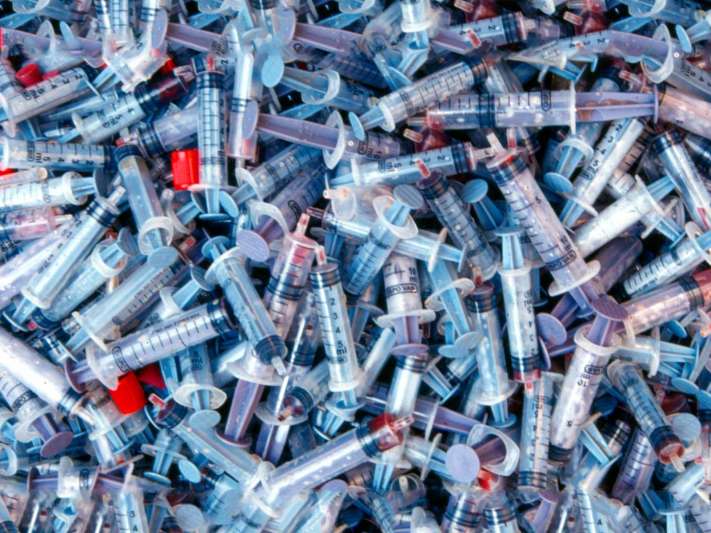Despite the municipal authorities’ measures to dispose biodegradable and non-biodegradable medical waste in an efficient manner, the biomedical waste generated by hospitals across the city still finds space on the roads, posing a hazard.
It is the municipal authorities’ idea to segregate the waste right at the source of generation, providing a provision of medical waste management. But a lot of hospitals seem to have turned a blind eye as syringes, bandages and other hazardous waste materials surrounding bins meant for domestic waste is quite a common sight. Street dogs further spread the waste while rummaging through these bins for food.
Needles, blades and other sharp materials are reportedly thrown into puncture proof containers causing injury to the skin. Not only do these wrongly disposed waste pose a sanitary hazard, they also pose a health hazard. The sharp objects are prone to cause injury to skin. While a lot of hospitals have now started following the norms and segregate waste properly in differently coloured bins, some hospitals still don’t.
Reportedly, 1.5-2 tonnes of biomedical waste is generated from 520 medical centres on an average consisting of hospitals, labs, diagnostic centres, clinics, blood banks and more. Because of the negligence of staff and hospital authorities, training programmes are being conducted to train staff free of cost to create awareness and educate them about the importance of segregating waste.
The waste that is segregated by hospitals into proper bins is incinerated, treated or deposited at Kapuluppada yard depending on the type of waste.









Discussion about this post